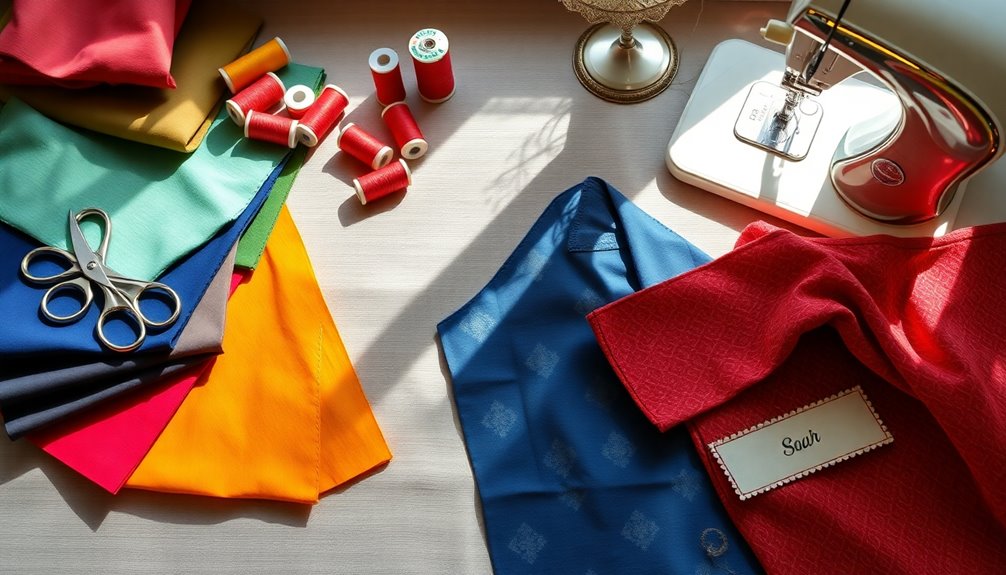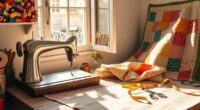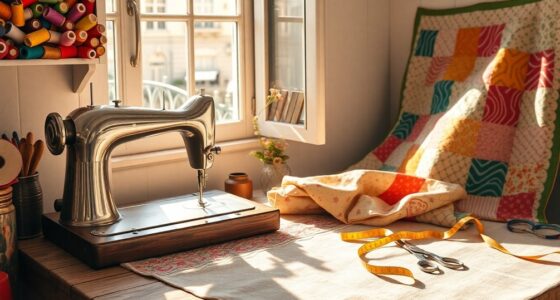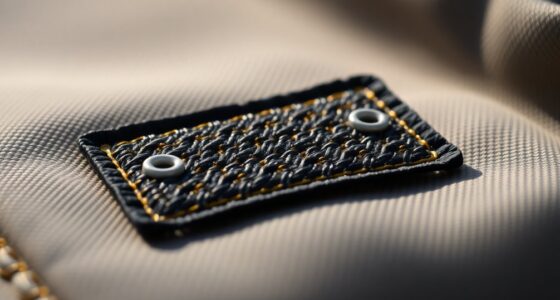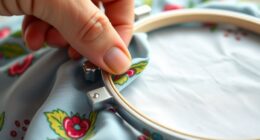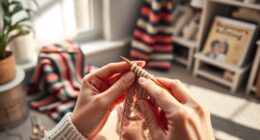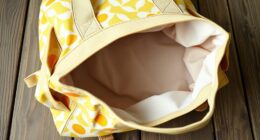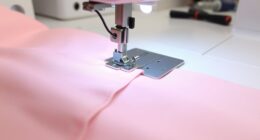Sewing might seem expensive at first, but it's truly worth the investment. You can create custom garments for less than retail prices, and quality tools save you money down the line. While your initial setup could average around $250, the potential for creativity and savings is immense. Plus, this hobby can even turn into a side business. Curious about how to get started and save money while sewing? There's more to discover!
Key Takeaways
- Initial setup costs for sewing average around $250, making it an accessible hobby for many.
- Custom garments can often be created for less than retail prices, offering significant savings.
- Investing in quality tools and materials reduces long-term replacement costs, enhancing value.
- Sewing fosters creativity and problem-solving skills, providing personal satisfaction beyond monetary aspects.
- The potential to sell unique handmade items can turn sewing into a profitable venture.
Understanding the Basics of Sewing
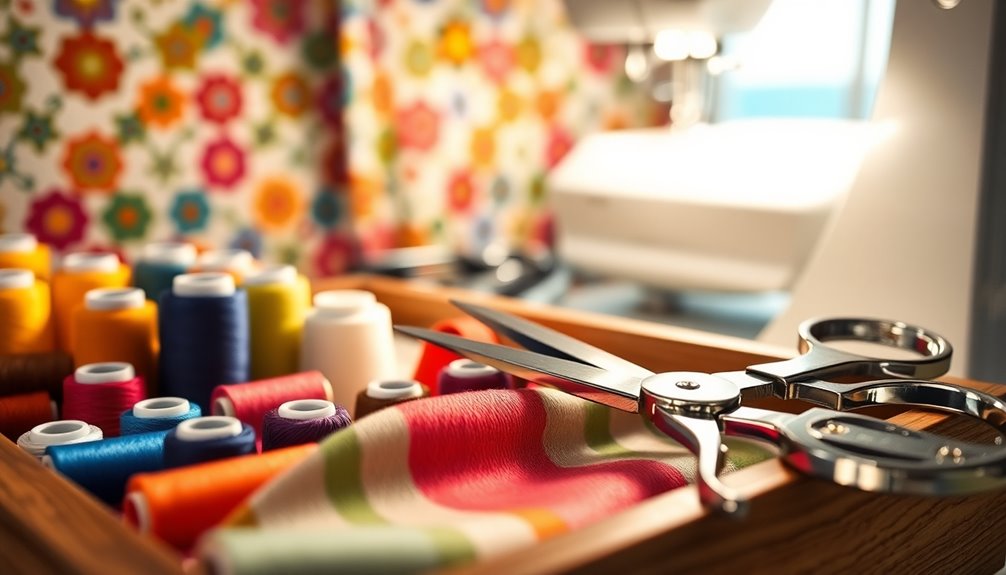
Have you ever wondered what it takes to plunge into the world of sewing? To get started, you'll need a few essential items. A reliable sewing machine, quality fabric scissors, pins, needles, and measuring tape are vital tools.
Your basic setup will likely cost around $250 on average, but investing in quality supplies can help you save money in the long run. Different fabric types require specific needles; thicker fabrics need heavy-duty ones, while thinner fabrics require finer alternatives.
As you learn basic sewing techniques, like backstitching and whipstitching, you'll develop the foundational skills necessary for success. Keeping an eye on your sewing budget will help you manage the costs associated with fabric, which can vary considerably.
Cost Factors in Sewing
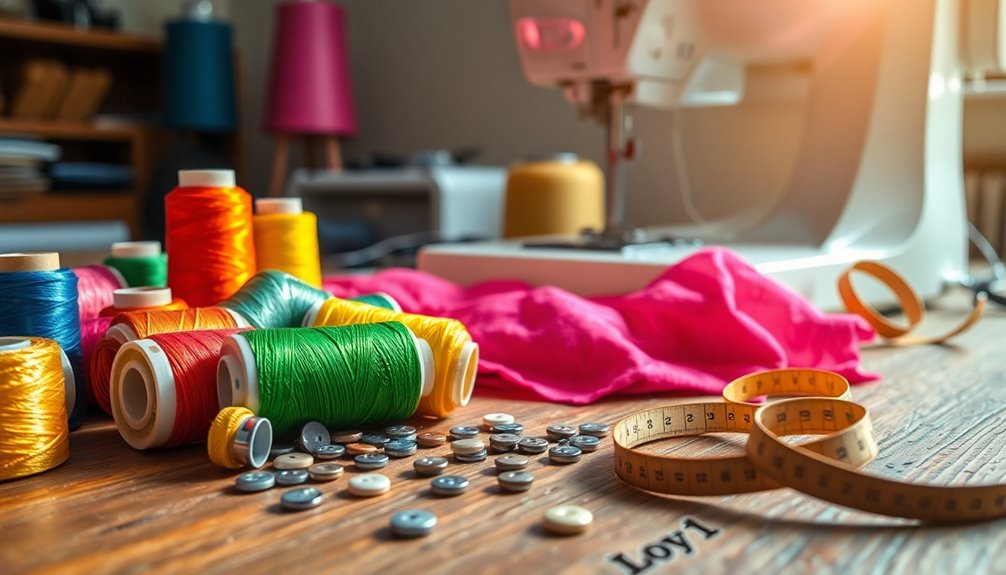
When diving into sewing, it's vital to understand the various cost factors that can influence your hobby. Here are some key considerations:
- Initial costs: A basic setup averages around $250.
- Fabric prices: Ranging from $5 to $50 per yard, depending on quality.
- Necessary tools: A good second-hand sewing machine may cost around $200.
- Ongoing expenses: Budgeting for fabric and notions is important.
While the cost of sewing can sometimes exceed buying ready-to-wear clothing, custom garments can be more affordable than boutique options. Additionally, exploring seasonal sales can help you find quality materials at a lower cost.
By keeping a budget and shopping during sales, you can focus on saving money while enjoying this creative endeavor. Just remember, the initial and ongoing expenses can add up, so plan accordingly!
Sewing Equipment and Their Costs
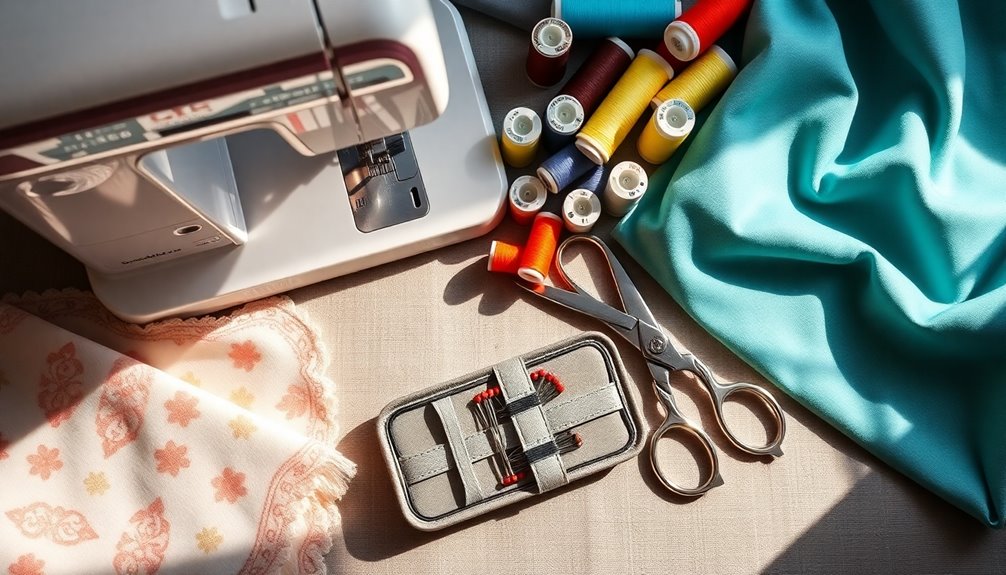
When you start sewing, investing in essential equipment is key to your success.
While basic sewing machines can range from $50 to $800, upgrading to better tools can enhance your skills and results over time.
Understanding these costs helps you plan your budget effectively as you grow in your hobby.
Essential Equipment Investment
Investing in essential sewing equipment can feel overwhelming at first, but understanding the costs involved helps you make informed decisions.
Here are some key items to take into account for your sewing journey:
- Sewing machines: Ranging from $50 for second-hand to over $5,000 for high-end models.
- Essential sewing tools: Scissors, pins, needles, and measuring tape can cost around $50 to $100.
- Quality fabric: Prices vary widely, from $5 to $50 per yard, affecting project costs.
- Basic sewing kits: Affordable options available for about $10, perfect for beginners.
Although this initial investment might seem high, opting for quality tools and materials can lead to long-term savings and enhance your overall sewing experience.
Cost of Upgrades
Upgrading your sewing equipment can greatly enhance your crafting experience and results. While sewing can be an expensive hobby, investing in good quality tools pays off in the long run. Here's a breakdown of potential upgrade costs:
| Equipment Type | Cost Range |
|---|---|
| Computerized Sewing Machine | $300 – $1,500 |
| Specialty Sergers | $200 – $1,000 |
| Premium Scissors/Cutters | $15 – $50 each |
| Quality Fabric (per yard) | $20 – $50 |
| Maintenance Tune-ups | $75 – $150 |
When you buy fabric and quality thread, remember that the ongoing costs of maintaining your sewing machine can add up. Choose wisely to guarantee your sewing projects yield great results!
Investing in Quality Supplies

When you invest in quality supplies, you're setting yourself up for long-term cost savings.
High-quality tools and materials not only enhance your sewing experience but also lead to better results, reducing the likelihood of mistakes.
Long-Term Cost Savings
While some may view sewing as an expensive hobby, focusing on quality supplies can actually lead to significant long-term savings.
By investing wisely, you can keep costs down and save money in the long run. Here's how:
- Buy durable tools like a used sewing machine ($200) and good scissors ($15) to reduce replacements.
- Choose high-quality fabrics for better-fitting garments, saving on future replacements.
- Create custom outfits for about $41, cheaper than retail.
- Take advantage of fabric on sale, with patterns as low as $0.99.
Additionally, sewing can be a sustainable practice, reducing waste and promoting eco-friendly options in fashion. Moreover, sustainable sewing practices not only help in minimizing textile waste but also encourage the use of ethically sourced materials. By choosing organic fabrics and repurposing old garments, sewists can contribute to a more environmentally conscious fashion industry. Ultimately, embracing these practices fosters creativity while promoting a slower, more mindful approach to clothing consumption.
Ultimately, the initial sewing costs can be offset through these smart choices, reinforcing sewing as a valuable investment rather than a fleeting expense.
Essential Tool Quality
Investing in quality sewing supplies is vital for anyone looking to elevate their craft. When you choose high-quality tools like scissors and sewing machines, you enhance your sewing experience and save you money in the long run.
A solid sewing machine, costing around $200 for a used model, is key for crafting quality garments. Similarly, good fabric scissors, priced around $15, guarantee clean cuts for professional-looking seams.
Don't overlook high-quality thread, which ranges from $2 to $4 per spool; it greatly impacts the durability and appearance of your sewing projects. Additionally, consider incorporating regular grooming into your pet care routine to minimize hair transfer onto your sewing materials.
How to Save Money While Sewing
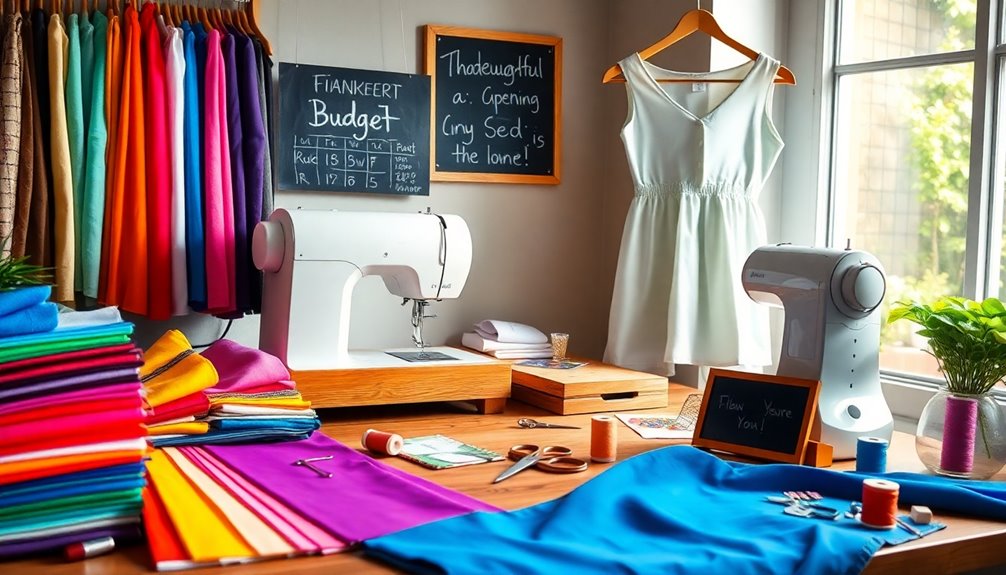
Sewing doesn't have to break the bank, especially if you know where to look for deals and how to be resourceful.
Here are some tips to save money while indulging in your sewing passion:
- Take advantage of dollar pattern sales and coupons.
- Shop for local fabric during clearance sales or at discount fabric stores.
- Repurpose old clothing and household items like curtains to create new projects.
- Set a monthly budget for sewing supplies to manage real costs.
The Creative Side of Sewing
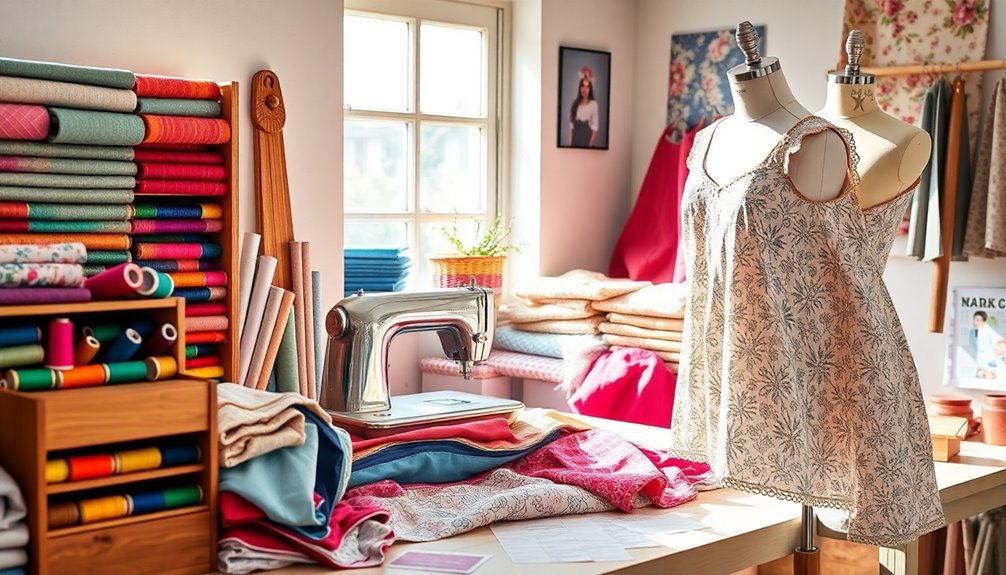
Creativity flows through every stitch of fabric you handle, transforming simple materials into unique, custom creations that reflect your personal style.
When you immerse yourself in sewing, you're not just buying fabric; you're crafting something beautiful that gives you a profound sense of accomplishment.
It's important to contemplate how experimenting with new techniques can elevate your skills and ignite your creativity.
Exploring fabric stores offers endless inspiration, allowing you to envision your next creative something.
Plus, the satisfaction of completing a project often outweighs any financial concerns.
Engaging with the sewing community can further enrich your experience, providing support and shared ideas that enhance your enjoyment of this fulfilling hobby.
Embrace the creative side of sewing – it's truly rewarding!
Benefits and Drawbacks of Sewing as a Hobby
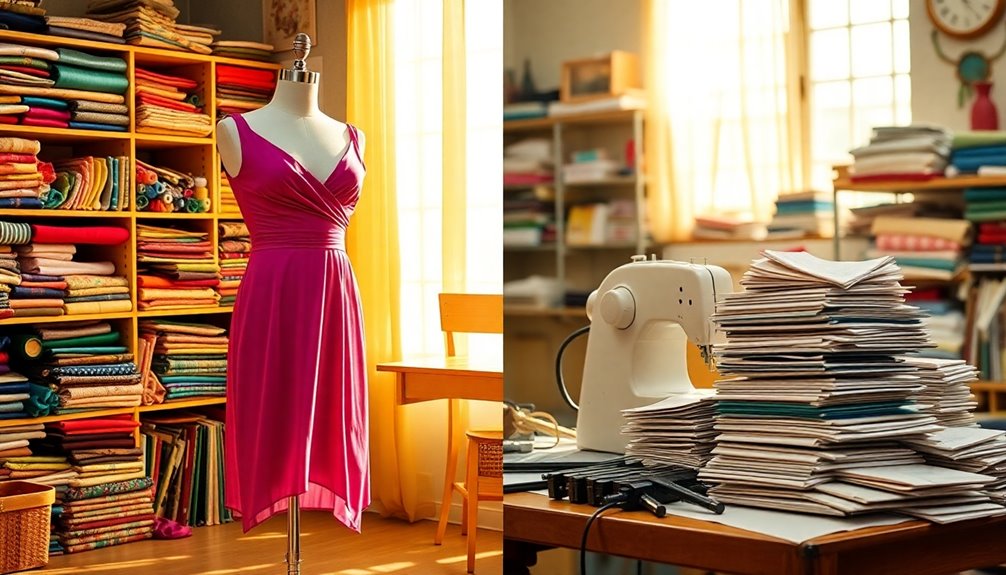
One of the greatest advantages of taking up sewing as a hobby is the therapeutic outlet it provides.
You'll find the emotional investment often outweighs the financial costs. While starting costs for a sewing machine can be high, you'll save money in the long run by creating something unique and stylish.
Here are some benefits and drawbacks to take into account:
- Create custom clothes for less
- Learn valuable skills
- Enjoy a satisfying creative process
- Manage ongoing expenses with budgeting
However, the time commitment can be considerable, especially for a beginner in sewing.
Balancing the type and quality of materials with your budget is essential, but with patience, you'll discover the true benefits of learning this rewarding craft.
Making Money From Sewing
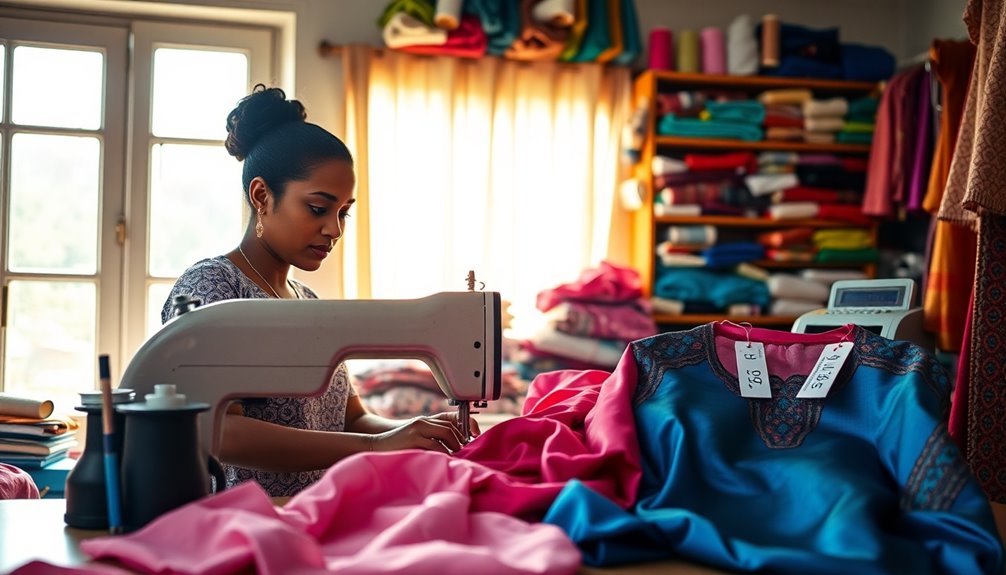
A thriving market exists for those who want to turn their sewing skills into a profitable venture. You can start making money from sewing by creating unique items like bags, clothing, and home decor.
Use commercial patterns as a guide, but don't hesitate to innovate. Invest in high-quality materials to enhance your creations and consider repurposing old clothing for sustainable projects.
As an experienced sewer, you can price your items between $30 and $200, depending on complexity and materials.
Collaborating with local businesses, participating in craft fairs, or promoting your work on social media can greatly boost your sales. Additionally, developing a growth mindset can help you embrace challenges and continually improve your sewing skills.
With dedication and creativity, your sewing projects can transform into a rewarding income stream.
Frequently Asked Questions
Is Sewing a Worthwhile Hobby?
Sewing's definitely a worthwhile hobby for you, especially if you enjoy creativity and craftsmanship.
It lets you express your style while crafting unique pieces tailored just for you. Plus, the therapeutic benefits can be incredibly rewarding; many find it soothing and satisfying.
With a variety of resources available online, you can learn at your own pace without breaking the bank.
You'll also appreciate the sense of accomplishment that comes from creating something with your own hands.
Is It Worth Learning to Sew?
Learning to sew is like opening a treasure chest of creativity.
You'll find it's worth every stitch, as you craft custom pieces that express your unique style. The initial investment may seem intimidating, but online resources help you learn without breaking the bank.
Plus, you'll gain a sense of accomplishment with each completed project. As your skills grow, you might even turn your passion into profit, making sewing a fulfilling journey worth starting.
Is Sewing a Valuable Skill?
Absolutely, sewing's a valuable skill! You create custom garments and home decor that reflect your style, saving money in the long run.
Plus, you'll learn to repair and alter clothing, extending its lifespan and promoting sustainability.
Sewing can also be therapeutic, offering stress relief and a sense of accomplishment.
By connecting with the sewing community, you gain access to resources and support, making your journey even more enriching.
Embrace this creative outlet!
What Do You Call Someone Who Likes to Sew?
Imagine a painter, brush in hand, creating a masterpiece on a blank canvas. Similarly, when you enjoy sewing, you're often called a "sewist." This term captures the essence of creativity, whether you're a beginner or an expert.
Like a seamstress or tailor, you craft garments or quilts, transforming fabric into art. The sewing community thrives on sharing skills and inspiration, making it a vibrant space for everyone who loves to sew.
Conclusion
In the end, sewing can be as costly as you make it. If you choose quality tools and supplies, you might spend a bit more upfront, but you'll save in the long run. Plus, with a little creativity and resourcefulness, you can keep expenses low. So, whether you're stitching for fun or profit, remember: it's not all about the pennies spent but the joy created. Immerse yourself, and you might just find it's worth every stitch!
